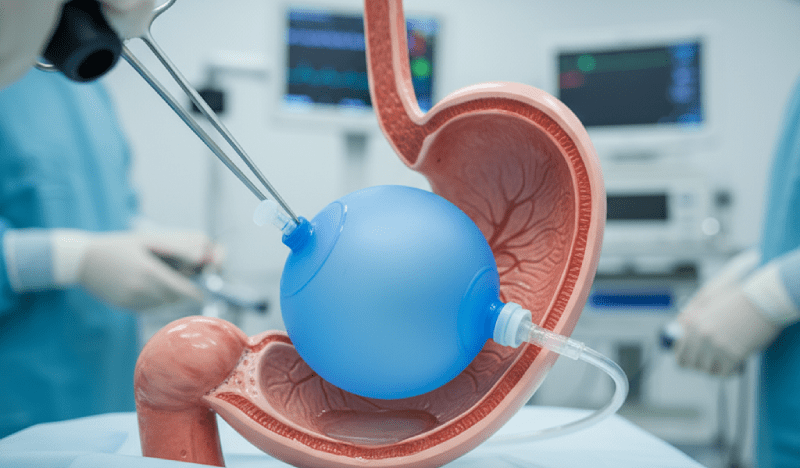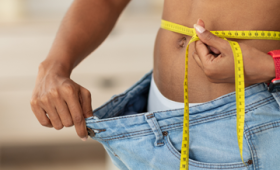What Is The Gastric Balloon And How Does It Work In The Body?
The gastric balloon is a temporary medical device used to support the weight loss process without surgical intervention. A soft balloon made of silicone is placed in the stomach endoscopically or in the form of a swallowable capsule and then inflated with physiological saline to occupy a specific volume.
The balloon, physically occupying space in the stomach, restricts the volume and helps the patient feel satiated with less food. The main goal of the treatment is to teach the patient portion control habits and provide a six to twelve-month behavior modification period for transitioning to a healthy diet. Maintaining this discipline after the balloon is removed is crucial for long-term permanence.
Why Are Marmaris Gastric Balloon Prices So Economical?
Marmaris, in addition to its excellent tourism infrastructure, stands out for offering high-quality healthcare services at European standards but with highly affordable costs. The main reasons for the attractive prices are the low general operating and personnel costs in Turkey, combined with the favorable foreign exchange rate for international patients. Modern clinics in Marmaris use high-quality, internationally accepted balloon brands, yet they can offer the same service at much more budget-friendly prices compared to Western countries. This situation, combined with comprehensive treatment packages that allow patients to predict their treatment costs in advance, makes Marmaris an appealing center.
Who Is Considered A Suitable Candidate For Gastric Balloon Treatment?
The gastric balloon is a suitable option for individuals with a Body Mass Index (BMI) between 27 and 40 who struggle to lose weight with diet and exercise but do not require surgical intervention. Candidates should be in good general health for the procedure and have no contraindications to receiving sedation. Conditions like severe stomach ulcers, large hiatal hernias, or previous major stomach surgeries may be contraindications. Most importantly, the patient is expected to have high motivation to adhere to the post-treatment diet program and lifestyle changes.
How Is The Gastric Balloon Procedure Performed And What Is Its Duration?
The gastric balloon procedure is generally performed using two main methods. Endoscopic placement, the most frequently used method, involves guiding the balloon into the stomach with a flexible tube under light sedation, and then inflating it with sterile liquid. This procedure usually takes 15 to 20 minutes. The other option is the swallowable balloon system, which is swallowed in capsule form and does not require endoscopy. Both methods are incision-free, stitch-free, and do not require hospitalization. After the effect of the sedation wears off, patients can usually return to their daily lives after a 1-2 hour observation period.
Is Anesthesia Used During The Gastric Balloon Procedure?
Yes, light sedation (conscious twilight state) is generally used during the gastric balloon procedure to ensure patient comfort and safety. Especially in the endoscopic placement method, sedation ensures the patient is completely relaxed during the procedure, feels no pain or discomfort, and does not remember the operation. Sedation is administered by an expert anesthetist, and the patient’s vital signs are continuously monitored. Sedation is generally not necessary for swallowable balloons, but a local anesthetic spray may be used to numb the throat during swallowing.
How Long Does The Gastric Balloon’s Effect Last In The Stomach?
The duration for which the gastric balloon remains in the stomach and creates a feeling of fullness varies depending on the type of balloon used. The most common balloons available on the market are generally designed for a period of 6 months or 12 months. The balloon must be removed at the end of this period. Innovative swallowable balloons usually deflate spontaneously after 4 months and are passed naturally out of the body. The time the balloon remains in the stomach serves as a key learning window for the patient to make healthy eating habits permanent. Even if the balloon’s effect diminishes afterward, the acquired habits ensure weight maintenance.
How Much Weight Loss Can Be Expected On Average With The Gastric Balloon?
The average amount of weight loss that can be achieved with the gastric balloon varies from person to person, depending on the type of balloon and the patient’s strict adherence to the diet program. During the time the balloon remains in the stomach, patients are generally targeted to lose 10% to 25% of their total body weight. For example, a patient weighing 90 kg can lose between 9 and 22.5 kg on average. This success depends not only on the mechanical effect of the balloon but also on the disciplined adherence to the high-protein, low-calorie nutrition plan guided by a dietitian.
How Is Weight Regain Prevented After The Balloon Is Removed?
Preventing weight regain after the balloon is removed is the most important step for the long-term success of the treatment. The balloon is only a temporary tool for fullness. For a successful outcome, the habits of eating small portions, eating slowly, and regular exercise learned while the balloon was in the stomach must be made into a permanent lifestyle. Continuing dietitian follow-up even after the balloon is removed helps the patient maintain motivation and minimizes the risk of reverting to old eating habits. It should be remembered that permanent success depends on the individual’s own discipline and lifestyle choices.
What Are The Most Common Side Effects Of The Gastric Balloon Procedure?
The most common side effects experienced in the first days after the gastric balloon procedure arise from the stomach’s adaptation process to the balloon. These side effects generally include nausea, vomiting, abdominal cramps, and a feeling of bloating in the stomach. These symptoms peak within the first 3 to 7 days following the balloon placement and then gradually decrease. Anti-nausea and anti-cramping medications are prescribed during this period to increase patient comfort. More serious side effects (balloon deflation, stomach ulcer) are extremely rare with modern balloons and under expert medical supervision.
How Should The Diet Be In The First Days After The Procedure?
The first days after the gastric balloon procedure are a critical period where the diet must be strictly controlled to acclimate the stomach to the balloon and prevent irritation. For the first 3 days, only clear liquids (water, fat-free broth, unsweetened compote) must be consumed. Over the next 4 days, there should be a slow transition to pureed, protein-rich, and low-fat foods (soft yogurt, vegetable purees, scrambled eggs). During the first week after the procedure, solid foods, spicy, acidic, and carbonated beverages must be strictly avoided. This controlled transition is essential for protecting the stomach and making a healthy start to the weight loss process.
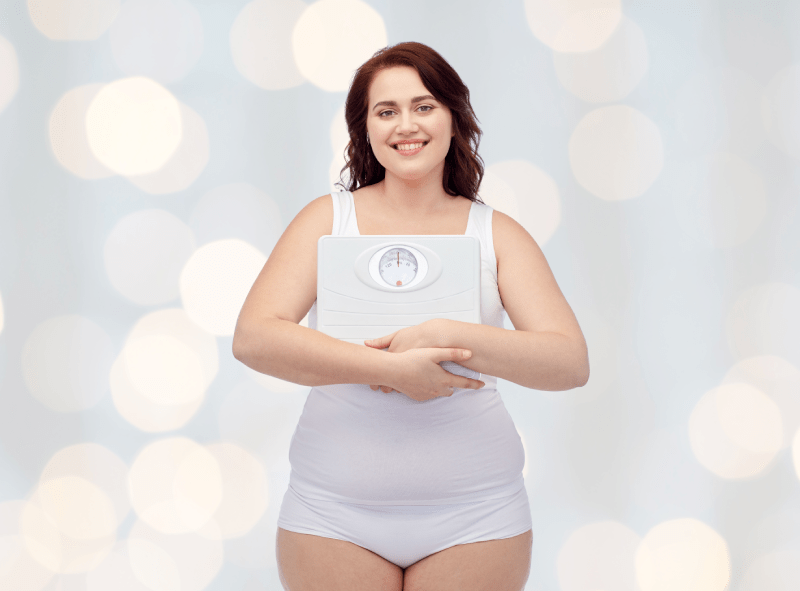
How Safe Is The Gastric Balloon Procedure?
The gastric balloon procedure is considered a much lower-risk and highly safe procedure compared to weight loss surgery (like sleeve gastrectomy). The procedure does not require a surgical incision or permanent anatomical change and is performed entirely endoscopically. The most important factors increasing safety are the experience of the Gastroenterology specialist who places the balloon, the use of internationally approved (CE/FDA) balloon brands, and a detailed check of the patient’s general health status with tests before the procedure. Although the complication risk is low, the entire process is managed with patient safety as the priority.
Who Is Not Suitable For Gastric Balloon Treatment (Contraindications)?
Gastric balloon treatment is not suitable for individuals with certain medical conditions. Major contraindications include large hiatal hernia, active stomach or duodenal ulcer, severe eating disorders (bulimia), and previous major stomach or intestinal surgeries. Additionally, pregnant or breastfeeding women, as well as individuals with uncontrolled severe chronic diseases (such as clotting disorders), are not suitable candidates. A detailed endoscopic and medical assessment is mandatory before starting treatment to definitively identify these risks.
How Is The Balloon Removal Procedure Performed And Is Any Pain Felt?
The gastric balloon removal procedure, similar to the placement procedure, is performed under light sedation and using the endoscopic method. The removal of the balloon begins with the aspiration of the inflated liquid through the endoscope. Once the balloon is deflated, it is gently pulled out through the mouth from inside the stomach, again using the endoscope. Since sedation is used, the patient does not feel any pain or discomfort. The procedure usually takes 20 to 30 minutes, and the patient is discharged after a short rest period to return to their daily life.
What Happens If The Balloon Deflates Or Bursts In The Stomach?
The risk of deflation or rupture in modern gastric balloons is quite low. However, if such a situation rarely occurs, the liquid inside the balloon usually contains a blue or green dye (methylene blue). If the balloon deflates, this dye is absorbed by the intestines, and the patient’s urine turning blue or green constitutes a warning signal. In this case, the patient must immediately contact the clinic to prevent the risk of intestinal obstruction. Emergency endoscopic removal of the balloon is planned. Swallowable balloons are designed to deflate and pass naturally after a certain period.
How Should Diet And Eating Habits Be Maintained After The Balloon Is Removed?
The diet after the balloon is removed focuses on the patient’s weight maintenance and lifestyle sustainability phase. Since the stomach volume returns to normal, portions should be gradually increased over the first few weeks, and the portion control discipline acquired while the balloon was in the stomach must be maintained. The dietitian will create a special balanced, high-fiber, and protein-rich nutrition plan for the patient during this transition period. The secret to long-term success is to make healthy lifestyle principles like slow eating, mindful eating, and regular physical activity permanent.
How Many Days In Total Is It Necessary To Stay In Marmaris For Gastric Balloon Treatment?
The gastric balloon procedure is a quick, completed outpatient procedure that does not require hospitalization. For international patients to have a safe and comfortable experience, the stay in Marmaris is generally planned for a total of 3 to 4 days. This duration is sufficient for arrival in the city, detailed pre-examination and tests, balloon placement, the mandatory check-up the day after, and safe monitoring of possible early side effects. Thanks to the comfortable accommodation options offered by Marmaris, patients have the opportunity to complete their treatment while resting.
What Is The Most Significant Advantage Of The Gastric Balloon Treatment?
The biggest advantage of the gastric balloon treatment is that it is reversible and does not require permanent anatomical changes. This method serves as an ideal bridge for patients who do not want to take the risks of surgical operations or whose BMI is not suitable for surgery. The procedure is completed quickly under sedation and does not require hospitalization. The feeling of fullness provided by the balloon offers the necessary time for the patient to learn portion control and change their eating habits. This low-risk and flexible method allows for a safe start to the weight loss journey.
How Is Nausea And Vomiting Managed In The First Days After The Procedure?
Nausea and vomiting, frequently observed in the first days after the gastric balloon is placed, are a natural result of the stomach trying to adapt to the balloon. This condition can be effectively controlled with powerful anti-emetic (anti-nausea) and antispasmodic medications prescribed by your clinic. Regular use of medications significantly reduces the intensity of nausea. Furthermore, critical steps to help the stomach relax and easily overcome these symptoms include the patient avoiding solid food for the first 3 days, consuming plenty of water, and taking liquids in very small sips.

Can I Return To Work Immediately After The Gastric Balloon Is Placed?
Although the gastric balloon is not a surgical operation, returning to work immediately after placement is not recommended due to the effects of sedation and the stomach’s adaptation to the balloon. It is best for patients to allocate the first 2 to 3 days after the procedure for rest. These first days are when side effects like nausea and cramps are most intense. The patient can return to non-strenuous work starting around the 3rd or 4th day, after the stomach has fully adapted and the discomfort has subsided. Heavy physical activity should be avoided during this period.
Which Balloon Brands Are Preferred In Gastric Balloon Treatment?
Reputable health centers in Marmaris generally prefer internationally recognized and FDA/CE approved high-quality balloon brands to ensure the success and reliability of the treatment. These brands are known for their durability, biocompatibility, and low risk of deflation. Which balloon brand (such as Elipse, Orbera, or Spatz) will be used in the clinic is determined according to the duration the balloon will remain in the stomach, the patient’s expectation, and the physician’s expertise. A quality balloon is an important factor that makes the patient’s treatment process more comfortable and the results more reliable.
What Is The Main Difference Between The Gastric Balloon And Gastric Botox?
The gastric balloon and gastric Botox are non-surgical weight loss methods, but their mechanisms of action are different. The gastric balloon creates a physical volume restriction in the stomach, providing a feeling of fullness, and maintains this effect until the balloon is removed. Gastric Botox, on the other hand, temporarily weakens the contraction force of the stomach muscles, prolonging the stomach emptying time and creating functional satiety, with its effect wearing off naturally. Although the balloon is a more invasive procedure, its volume restriction is more noticeable. Which method is more suitable is determined by considering the patient’s BMI, the expected amount of weight loss, and their attitude towards endoscopy/anesthesia.
What Is The Maximum Time The Balloon Must Stay In The Body?
Every type of gastric balloon has a maximum duration determined by the manufacturer for which it must remain in the stomach. This duration is set considering the durability of the balloon’s material and its resistance to the acidic environment in the stomach. For example, the maximum duration for a 6-month balloon should generally not exceed 6-7 months. The balloon remaining in the stomach longer than this maximum duration increases the risk of deterioration of the balloon’s integrity, deflation, or damage to the stomach wall. Therefore, it is vital that the balloon is removed endoscopically before the period set by the physician expires.
When Can Sports And Exercise Be Started After Gastric Balloon Treatment?
Sports and exercise routines should be resumed gradually after the gastric balloon is placed. For the first 3 to 5 days, only light walking should be done for the stomach’s adaptation. Moderate-intensity exercises (brisk walking, light cardio) can generally be started at the end of the first week. After stomach cramps or discomfort completely subside, which is usually 2 weeks later, more intense sports and weight-lifting exercises that strain the abdominal area can be resumed. Regular exercise accelerates the weight loss process and increases the balloon’s effectiveness, but avoiding strain on the stomach in the initial phase is the fundamental rule.
What Preparations Are Mandatory Before The Balloon Placement Procedure?
Before the balloon placement procedure, some mandatory preparations must be made to check the patient’s general health status and stomach health. Patients are required to completely stop solid food intake at least 8 hours, and liquid intake at least 4 hours before the procedure (fasting is mandatory). Additionally, blood-thinning medications and certain vitamins should be stopped beforehand, as instructed by the physician. Avoiding alcohol and smoking before the procedure is critical to avoid irritating the stomach. Upon arrival in Marmaris, necessary blood tests and detailed endoscopy checks are completed to prepare for the procedure.
Does The Gastric Balloon Create A Permanent Structural Change In The Body?
No, the gastric balloon does not create a permanent structural change in the body. The entire effect of the balloon is limited to temporarily restricting volume in the stomach. The balloon only creates a feeling of fullness while it remains in the stomach. When the balloon’s time is up, it is removed, and the structure and function of the stomach return entirely to their former state. The main purpose of the balloon is to offer a reversible support for the patient to make new and healthy eating habits permanent. This feature makes it a less risky option compared to surgical methods.
Why Should Endoscopic Check Be Done Before The Balloon Is Removed?
Endoscopic examination is mandatory before the balloon removal procedure and is critical for safety. This check is performed to examine whether the balloon has deflated, its integrity has been compromised, and whether any damage such as ulcers or irritation has occurred to the stomach wall due to the balloon remaining in the stomach for a long time. This check ensures that the balloon can be safely deflated and pulled out through the mouth without the risk of passing into the intestines. This detailed check performed beforehand is essential for the smooth progression of the removal procedure.
What Is Included In The Gastric Balloon Packages In Marmaris?
The gastric balloon packages offered by health tourism centers in Marmaris generally include comprehensive services for international patients. Standard inclusions are: the balloon itself (chosen brand), endoscopic placement and removal fees, sedation and anesthesia cost, hospital/clinic usage fees, initial prescribed medications, airport and local transfers, and generally 3-4 nights of comfortable accommodation. Additionally, dietitian follow-up and translation services are usually part of the package. All included and excluded items should be clarified to avoid surprise extra fees for the patient.
What Medications Should Be Used Regularly During The Procedure?
A range of medications is required for regular use after the gastric balloon is placed to increase the patient’s comfort and protect the stomach. These medications typically include: anti-emetic medications to prevent nausea and vomiting in the first few days, stomach protector (PPI) medications that balance stomach acid and protect the stomach wall, and antispasmodic/painkiller medications to alleviate possible cramps/pain. The consistent and regular use of these medications, particularly during the first week when the stomach adapts to the balloon, minimizes the risk of complications.
Does Stomach Acid Problem Occur After The Gastric Balloon Procedure?
It is possible for some patients to experience temporary problems like acid reflux, burning, or heartburn after the gastric balloon procedure, due to the pressure or slight irritation the balloon creates in the stomach. This condition may be caused by the balloon putting pressure on the stomach valve (sphincter) or increased gastric pressure. To prevent or manage such problems, physicians generally prescribe stomach protector (PPI) medications to be started before the procedure and continued throughout the time the balloon remains in the stomach. Avoiding lying down immediately after eating and avoiding spicy foods helps alleviate the symptoms.
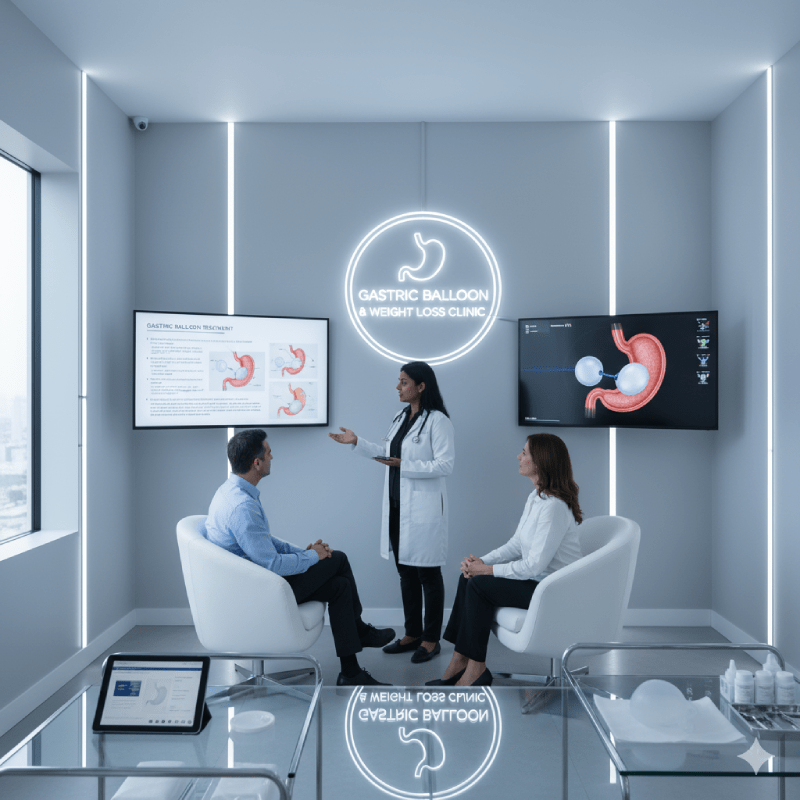
What Is The Swallowable Gastric Balloon And How Is It Different From The Endoscopic Balloon?
The swallowable gastric balloon is an innovative technique that does not require endoscopy or anesthesia for placement and removal. The balloon is in the form of a capsule swallowed by the patient and, upon reaching the stomach, is inflated via a thin catheter applied externally. The biggest difference from the endoscopic balloon is that it usually deflates spontaneously after 4 months and is passed naturally out of the body with stool, eliminating the removal procedure. The swallowable balloon offers an ideal alternative for patients who fear endoscopy or are reluctant to receive anesthesia.
Why Are Smoking And Alcohol Restrictions So Important Before The Gastric Balloon?
Serious restrictions on smoking and alcohol consumption before and after the gastric balloon are vital for the success of the process. Smoking increases gastric acid secretion, aggravating the nausea and stomach discomfort caused by the balloon and slowing down wound healing. Alcohol is both high in calories and can interfere with the medications used during the treatment process, and can also cause dehydration. Therefore, completely avoiding these substances for at least one week before the operation and throughout the time the balloon remains in the stomach is mandatory for treatment comfort and maximum weight loss.
How Is The Weight Loss Monitoring Process Handled After The Gastric Balloon Is Placed?
The weight loss process after the gastric balloon is placed is regularly monitored by the clinic’s dietitians and patient coordinators in Marmaris. Patients generally provide information about their weight loss, nutrition follow-up, and difficulties they experience through remote consultation (tele-consultation) at monthly or bi-weekly intervals. This regular follow-up is critical for keeping the patient’s motivation high, correcting possible mistakes in the diet, and ensuring maximum results while the balloon is effective. Follow-up is also maintained after the balloon is removed for the permanence of healthy habits.
What Does The Long-Term Success Of Gastric Balloon Treatment Mean?
The long-term success of gastric balloon treatment depends on the sustainability of the lifestyle after the balloon is removed. Although weight loss is achieved while the balloon is in the stomach, the permanence of this result relies on the patient continuing healthy eating habits and regular exercise routines even without the balloon. Dietitian support and maintaining motivation are key to long-term success. Studies show that a significant portion of patients who lose weight with the balloon can maintain the weight loss for years if they sustain their new habits.
What Risk Occurs If I Become Pregnant While The Gastric Balloon Is In Place?
Becoming pregnant while the gastric balloon is in place carries a serious risk, and this situation must be immediately reported to the physician. The volume occupied by the balloon in the stomach and its effect on nutrient absorption can compromise the adequate nutrient and calorie intake necessary for the healthy development of the mother and fetus. Therefore, if pregnancy is suspected, the balloon may need to be removed endoscopically as soon as possible. The condition that patients should have no future pregnancy plans must be strictly observed before starting gastric balloon treatment.
Can A Car Be Driven After The Gastric Balloon Procedure?
Since the gastric balloon procedure is performed under sedation, patients are absolutely not recommended to drive a car on the day of the procedure. The effect of the sedation can increase reflexes and distraction, which heightens the risk of traffic accidents. Therefore, it is mandatory for patients to use the transfer service or leave the clinic accompanied by a companion to their accommodation. Patients can start driving a car the next day after the effects of the sedation have completely worn off and they feel fully alert. Adhering strictly to this rule is important for ensuring safety.
What Supplements Should Be Used With The Gastric Balloon?
Since food intake is restricted when using the gastric balloon, it is important to use additional supplements to prevent potential vitamin and mineral deficiencies. Dietitians typically recommend: protein supplements to maintain muscle mass, B vitamins (especially B12) to support hair and nail health, Vitamin D, and iron supplements. The use of these supplements ensures that the body’s essential needs are met while supporting healthy weight loss. All supplements must be taken only upon the advice and direction of a specialist physician or dietitian.
What Stomach Protective Medications Should Be Used Before The Balloon?
It is mandatory to use stomach protective (Proton Pump Inhibitors – PPI) medications before and after the gastric balloon placement procedure to reduce the stomach’s acid level and lessen the risk of irritation and ulcers that might occur due to the balloon. Physicians generally start these medications about a week before the balloon placement and ask for them to be continued regularly throughout the time the balloon remains in the stomach. These medications play a critical role in protecting the stomach wall, thereby increasing the safety and comfort of the balloon. The regular use of such medication is an integral part of the treatment plan.
When Is Overseas Travel Safe After The Procedure?
Since the gastric balloon application is a procedure with fast recovery, patients can generally travel safely abroad 2 to 3 days after the procedure. However, the first 48 hours after balloon placement are the period when stomach cramps and nausea are most intense; it is most ideal to spend this time resting in Marmaris. The gastric balloon does not cause any specific problems during air travel; however, the patient is advised to drink plenty of fluids and keep their anti-nausea medications with them during the trip to enhance their comfort.
What Is The Age Limit For Gastric Balloon Treatment?
The lower age limit for gastric balloon treatment is generally 18 years old. The upper age limit depends on the patient’s general health status and whether there is any condition preventing them from receiving sedation. Since the gastric balloon carries lower risk than surgery, it can be a suitable option for elderly patients who can tolerate sedation. However, for every patient, chronic diseases must be under control, and the suitability of the treatment must be confirmed by a detailed medical assessment. What is important is the physiological health and adaptability to the treatment rather than chronological age.
Does Bad Breath Occur After The Gastric Balloon?
It is possible to experience temporary bad breath (halitosis) after gastric balloon treatment. The main reasons for this include: food residues remaining in the stomach due to the slowing of stomach emptying time, causing odor, and the development of ketosis (a byproduct of fat burning) due to diet restrictions in the first few days. This condition can be largely prevented by regular and meticulous oral hygiene (brushing, tongue cleaning) and consuming plenty of water. This problem usually disappears as the diet returns to normal and the stomach adjusts to the balloon.
Does Dietitian Support Continue After The Balloon Is Removed?
Yes, dietitian support continuing even after the gastric balloon is removed is vital for the permanence of weight loss. The removal of the balloon signifies the patient’s entry into the weight maintenance phase. The dietitian creates a plan during this stage that allows the patient to controlledly increase their portions and manage their calorie intake. Long-term follow-up and counseling services minimize the risk of the patient reverting to old, unhealthy eating habits and help maintain the successful results achieved with the balloon.
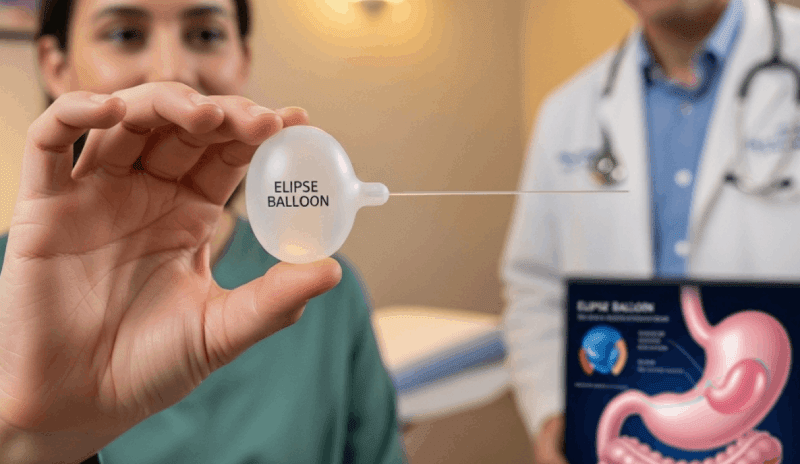
Which Specialization Covers The Balloon Placement Procedure?
The gastric balloon placement and removal procedures, being endoscopic procedures, are generally performed by Gastroenterology specialists who are experienced and competent in this field. These specialists are knowledgeable about digestive system anatomy and endoscopic techniques. The correct positioning of the balloon, its inflation, and the management of possible stomach irritations are the responsibility of this specialization. The patient’s safety under sedation is managed by an Anesthesiology specialist. Clinics in Marmaris collaborate with certified and experienced specialists to perform these procedures.
Is Endoscopy Mandatory Before The Balloon Placement Procedure?
Yes, diagnostic endoscopy is mandatory before the endoscopic gastric balloon placement procedure. This pre-endoscopy is performed to check for any condition that might prevent the placement of the gastric balloon (large hiatal hernia, active ulcer, severe inflammation, etc.). To safely and successfully place the balloon, it must be ensured that the inside of the stomach is healthy and suitable. If a problem is detected during this examination, that problem must be treated first, and then the balloon placement procedure can be planned.
What Are The Reasons For Failure Of The Gastric Balloon Treatment?
The main reason for the failure of gastric balloon treatment is the patient’s inability to comply with the diet program and lifestyle changes. Even though the balloon provides physical restriction, if the patient continues to consume high-calorie liquid foods (carbonated drinks, sweets, alcohol), weight loss may not occur. Other rare reasons include the early deflation of the balloon or the stomach’s hypersensitivity resulting in uncontrollable nausea and vomiting. Failure is generally caused by behavioral non-compliance rather than a surgical problem.
Does The Gastric Balloon Cause Damage To Surrounding Tissues?
The gastric balloon is made of silicone, which is biocompatible, and despite its contact with the inner surface of the stomach, it does not cause permanent damage to surrounding tissues. The only effect the balloon causes in the stomach is temporary volume restriction and fullness. Rarely, balloons that remain for a long time or are placed improperly can cause temporary irritation or erosion on the stomach wall; however, these conditions can usually be treated with stomach protective medications. After the balloon is removed, the stomach tissue heals quickly, and no permanent damage occurs.
What Conditions Are Emergency Signals After The Balloon Is Placed?
Some conditions after the gastric balloon is placed can be signals requiring urgent medical intervention. These include severe and uncontrollable vomiting, severe stomach cramps or abdominal pain lasting more than a few days, blood in the stool, or urine turning blue or green (a sign of balloon deflation). If such symptoms occur, the patient must immediately call the clinic or emergency service. Early intervention is vital for preventing possible complications (e.g., intestinal obstruction).
Is Translator Service Provided For Patients From Abroad?
Yes, health tourism centers in Marmaris offer professional translation services as a standard to ensure international patients go through their treatment processes smoothly. Interpreters assist the patient in communicating effectively with the physician and other clinic staff at every stage, from initial consultation to post-discharge instructions. This service eliminates the language barrier, ensuring the patient receives the most accurate information about the process, feels secure, and fully complies with the treatment.
This detailed set of 35 questions and answers provides the comprehensive guide you need about Gastric Balloon treatment and pricing in Marmaris. To start your non-surgical weight loss journey with high standards and confidence, and to plan your entire travel organization stress-free, we strongly recommend contacting Cure Holiday, who are experts in health tourism. They will be delighted to offer you the most suitable prices and guide you through the process.
